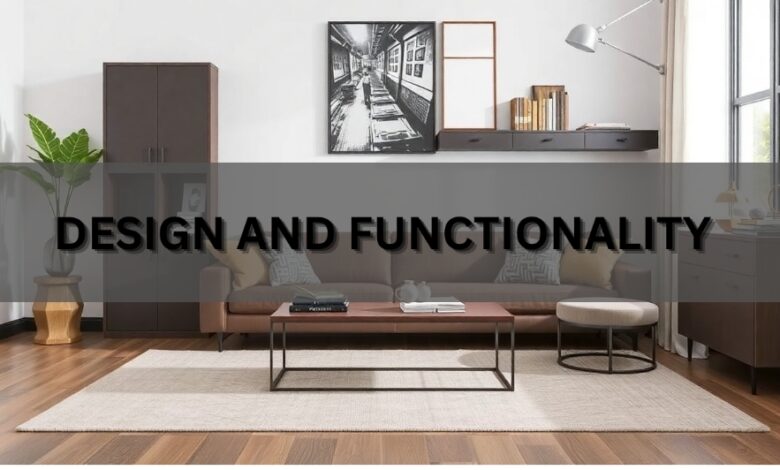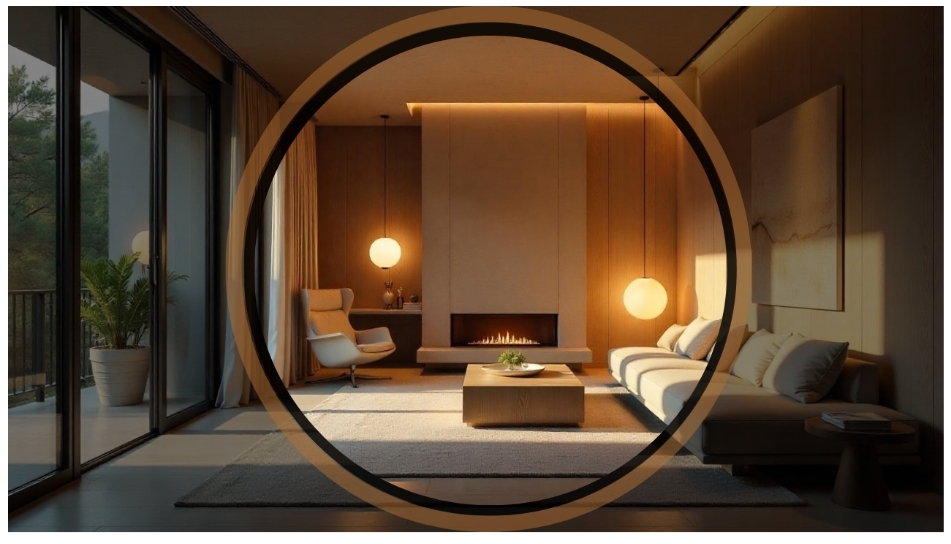Choosing the Right Material for Your Home Interior: A Deep Dive Into Design and Functionality

When it comes to designing your home interior, choosing the right materials can be the defining factor between a space that feels harmonious and one that leaves you with a sense of disarray. From walls to flooring, furniture to finishes, the materials you select impact not only the aesthetics but also the functionality and longevity of your living space.
While trends and colors may come and go, understanding the qualities of different materials—how they interact with light, air, and the environment—helps you create a space that is timeless, comfortable, and durable. This guide takes a deep dive into the material selection process, offering unique insights into the lesser-known aspects of home interiors and how to choose materials that serve your needs.
The Psychological Impact of Materials in Interior Design
Most discussions on home materials focus on practicalities and style. However, the psychological effects of material choices are often overlooked. Various materials can evoke different emotions, which can influence the mood of a space.
- Wood: The rich textures and warmth of wood have been shown to evoke feelings of comfort, tranquility, and connection to nature. Wood finishes, whether natural or stained, can warm up a room while making it feel inviting.
- Metals: Cool-toned metals like stainless steel and chrome create a modern, industrial look but can feel cold or sterile if overused. Consider complementing these materials with warmer textures, such as textiles, to balance the space.
- Fabric and Textiles: Fabrics such as velvet, linen, or cotton can soften a space and evoke a sense of comfort and relaxation. The tactile qualities of textiles play a significant role in how we feel about a room, especially in spaces where we unwind, like the living room or bedroom.
Tile and Stone for the Kitchen: Practicality Meets Style
In the heart of your home, the kitchen, functionality and style must go hand in hand. What if one simple addition could transform the space, combining beauty and practicality?. One material that can elevate both is kitchen backsplash tile. An essential in any kitchen remodel, the right backsplash tile adds aesthetic appeal while protecting against grease, moisture, and stains, setting the tone for your entire design.
You can choose from a variety of materials, including classic subway tiles, vibrant mosaic glass tiles, or luxurious natural stone options like marble or granite. Each material offers a unique aesthetic and functional benefit:
- Subway Tiles: A timeless choice, these rectangular tiles provide a sleek, clean look that pairs well with any design style—from traditional to modern.
- Mosaic Glass Tiles: These tiles add texture, color, and a touch of modernity to your kitchen. They’re perfect for creating a statement backsplash or adding a pop of color to complement your kitchen’s palette.
- Natural Stone Tiles (Marble or Granite): For a more luxurious feel, stone options like marble or granite offer durability and an upscale appearance. These materials are heat and scratch-resistant, ideal for a hardworking space like the kitchen.
The right backsplash tile enhances your countertops and cabinetry, creating a cohesive, polished kitchen. Easy to clean and durable, they’re ideal for high-traffic areas and can retain their beauty with proper care, making them a smart investment in both style and practicality.
Functionality Meets Beauty: The Balance of Durability and Aesthetics
It’s easy to get caught up in choosing materials that look good, but when considering materials for high-traffic areas or spaces exposed to moisture and wear, functionality should come first. Here’s how you can strike the right balance:
- Porcelain vs. Ceramic Tiles: While ceramic tiles are often more affordable, porcelain tiles offer superior durability, water resistance, and scratch resistance. This makes porcelain a better choice for high-traffic areas or wet zones like bathrooms and kitchens.
- Hardwood vs. Engineered Wood: While solid hardwood floors have a timeless appeal, they are more susceptible to scratches, dents, and moisture damage. Engineered wood, on the other hand, combines layers of plywood with a hardwood veneer, providing better stability and resistance to humidity changes, making it ideal for areas like basements or rooms with high moisture.
- Natural Stone vs. Quartz: Granite countertops have long been a favorite for kitchens, but quartz surfaces have taken over in popularity due to their resistance to stains, scratches, and high heat. Quartz offers a similar aesthetic to natural stone but with a much easier maintenance regimen.
The Role of Light in Material Selection
When choosing materials, the way light interacts with them can drastically change the perception of your space. Some materials absorb light, while others reflect it, affecting both the mood and energy efficiency of a room.
- Light Colors vs. Dark Colors: Light-colored materials such as white or pale wood tend to reflect light, making spaces appear larger and brighter. Darker tones, like deep wood or black marble, absorb light and create a more intimate and dramatic atmosphere, but they can make a room feel smaller and cozier.
- Reflective Materials: Mirrors, glass, and polished metals can help bounce light around a room, brightening the space without the need for additional lighting. In small spaces or rooms with limited natural light, reflective materials can amplify brightness and openness.
- Translucent vs. Opaque Materials: In rooms where privacy is essential, opaque materials such as frosted glass or heavy curtains work well. In contrast, translucent materials like sheer fabrics and textured glass allow natural light to flow through while providing some level of privacy.
- Light Colored Roofing Material: Choosing the right roofing material is a critical decision that impacts both the aesthetics and functionality of your home. The decision of light colored roofing material can also influence how light interacts with your home’s overall design. A roof that reflects sunlight can significantly affect the lighting dynamics within the house by minimizing heat retention in summer, contributing to a brighter and cooler living space indoors.
Mixing Materials for Unique Effects
In today’s interior design, mixing materials is not only encouraged but embraced. Pairing contrasting textures and finishes can create visual interest and elevate the overall design. However, the key to successfully mixing materials is balance and cohesion.
- Wood and Metal: Combining the organic feel of wood with the sleek, modern lines of metal can create a beautifully balanced design. Consider wood-framed furniture with metal legs or a wooden accent wall paired with stainless steel fixtures.
- Stone and Fabric: A raw stone wall can be softened with fabric-covered furniture or soft textiles. The contrast between the hard stone and the soft fabric can create a balanced yet striking visual.
- Glass and Concrete: In modern or industrial-style interiors, the combination of raw concrete with transparent glass can create an open, airy, and contemporary space. Glass railings, windows, and doors enhance the flow of light while maintaining the solid, sturdy presence of concrete.
Luxury in Every Detail: Defining Your Space with High-End Materials
Luxury materials go beyond mere aesthetics—they’re an investment in your home’s long-term value and comfort. When considering materials like high-end marble, bespoke cabinetry, or custom flooring, you’re not just enhancing the beauty of your space, but also making a statement about your personal style.
One area where this is especially evident is in interior design’s ability to Redefine Luxury and Style in the World of Interior Design. Materials like rich mahogany, hand-carved stone, and luxurious textiles offer an undeniable sense of opulence. Incorporating these elements into your home brings sophistication and a tailored atmosphere, making it stand out from conventional design trends. Think about blending modern luxury with timeless materials to create a home that’s both stylish and enduring.
Conclusion
Ultimately, choosing the right materials for your home interior requires thoughtful consideration of both your immediate needs and long-term goals. Balancing beauty, function, sustainability, and psychological impact will ensure that your living space is not only stylish but comfortable and durable. As materials continue to evolve with technological advances and environmental awareness, the opportunities to create a personalized, timeless home are endless. The key lies in understanding the characteristics of each material and how it contributes to the overall atmosphere you wish to cultivate.



